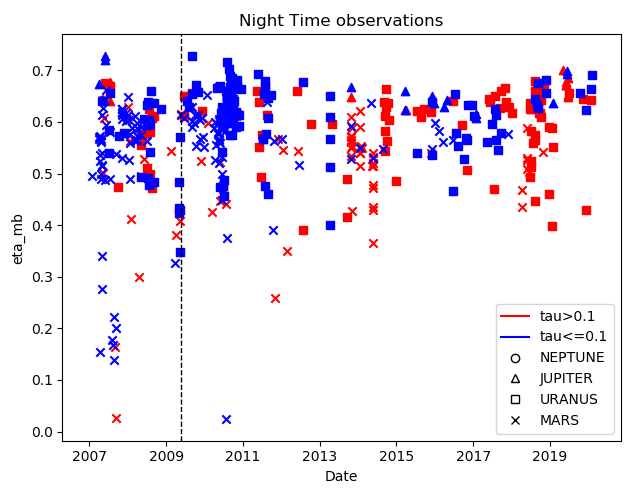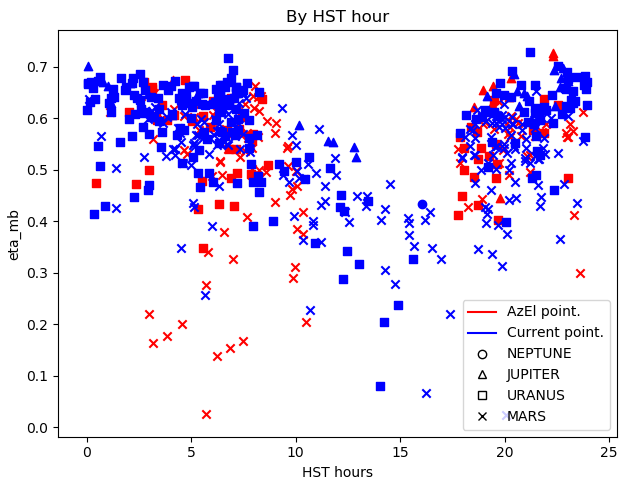Observations of the planets Mars, Jupiter, and Uranus have been made with HARP using ACSIS as a backend since 2007. Before the planet observations always a (continuum) pointing observation was done, and usually also a z-focus.
Aperture and beam efficiency have been derived from the planet the observations following the recipes
in Section 9.3 of the Userguide (link), using the STARLINK program FLUXES. We assumed a beamsize for RxA3 of 14 arcseconds at 345.796 GHz. For Jupiter and Saturn we used the flux densities in the current (STARLINK) version of scuba2.dat, while for Uranus and Neptune we took the ESA4 flux densities (for this aim three filters were added to the STARLINK version of scuba2.dat).
Below are figures showing the beam efficiencies derived from planet observations obtained since 2007 with HARP. Symbols are crosses – Mars, triangles – Jupiter, squares – Uranus. The observations in this figure have been made in the UT interval 5h to 19h (HST 19h to 9h). Outside this interval the submillimeter seeing (as observed at the SMA) usually is larger (above 4 arcsec compared to 0.5 arcsec at night) and the telescope surface is deformed because of thermal effects. Blue symbols show observation made in good weather (tau < 0.10).
When clicking on the figure one sees a figure where we distinguish between nighttime and daytime observations (for all tau values).
The ratio of aperture and main beam efficiency ηa/ηmb derived from these data is 0.812 for Uranus and 0.814 for Mars.
The HARP main beam efficiency versus Hawaii Standard Time for all observations between 2008 and 2014. Observations done before the change in pointing method (see here) are indicated in red. There is a significant decrease in main beam efficiency during the day, but at all times there is a large range in efficiency. The decrease in efficiency during the day is less on a cloudy day when the Sun does not affect the surface of the dish as much.





